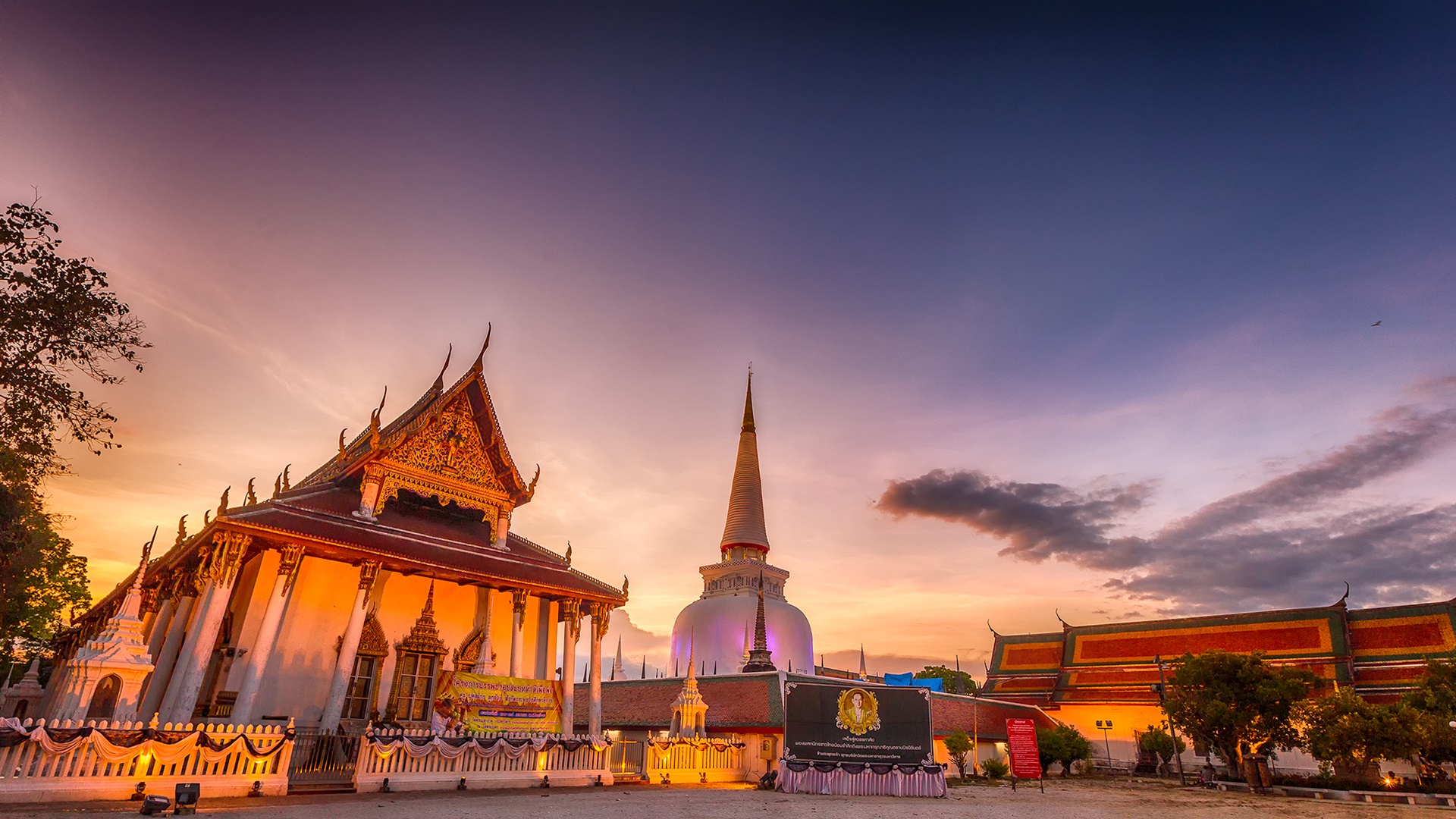
History of Wat Phra Mahathat Woramahawihan, Nakhon Si Thammarat
1. The Founding of Nakhon Si Thammarat and the Role of the Temple
Wat Phra Mahathat Woramahawihan is located in the heart of Nakhon Si Thammarat municipality in southern Thailand. It has long served as a significant center for Theravāda Buddhism in the region. The temple was established around the 13th–14th century Buddhist Era (approximately the 8th–9th century CE), during the reign of King Sri Thammasokaraj, who founded the city of Nakhon Si Thammarat as the capital of the Srivijaya successor state. The temple became a major stronghold for Theravāda Buddhism brought from Sri Lanka and has been revered as a sacred site housing Buddha relics.
2. Construction of the Great Chedi (Stupa)
The most iconic structure of the temple is the Phra Borommathat Chedi, a towering and revered stupa believed to enshrine relics of the Buddha. The stupa was first constructed in the 18th Buddhist Century (around the 12th century CE), influenced by both Sri Lankan and Srivijayan art styles. Shaped in a bell form with a golden pinnacle, the chedi originally stood at over 55 meters in height and has undergone several restorations throughout history—especially during the reigns of King Sri Thammasokaraj and later during the Ayutthaya period.
3. A Center for Southern Buddhism
Wat Phra Mahathat Woramahawihan has not only served as a royal temple and a place for major religious ceremonies in Nakhon Si Thammarat but also as a vital center for the spread of Theravāda Buddhism throughout southern Thailand, Laos, and Cambodia. Monks from Sri Lanka and local regions would often gather here for study and religious practice, reinforcing its role as a hub for high-level Buddhist education and spiritual leadership.
4. Restoration and Preservation Over Time
During the early Rattanakosin period (late 18th to 19th century CE), the temple was officially recognized as a first-class royal monastery. Significant renovations occurred during the reigns of King Rama IV and King Rama V, who valued cultural preservation. Many structures within the temple complex, such as the main vihāra (assembly hall), the painted vihāra, the Bodhi vihāra, and the Horse-Riding Buddha vihāra, were restored to maintain their historical integrity. To this day, the temple continues to serve the local community in religious and cultural functions.
5. Recognition and World Heritage Tentative Listing
Due to its historical, artistic, and religious significance, Wat Phra Mahathat Woramahawihan has been designated as a first-class royal temple (Woramahawihan). In 2023, the temple was officially placed on UNESCO’s Tentative List for World Cultural Heritage Sites, marking an important milestone in international recognition and preservation of Thailand’s rich heritage.
6. Architecture and Artistic Significance
The temple complex showcases a blend of architectural influences from different periods, including Srivijaya, Ayutthaya, and Rattanakosin styles. The great chedi was constructed using ancient building techniques and is surrounded by small niches housing standing Buddha images known as Phra Si Wichai Noi. The temple also features ancient mural paintings, sacred Buddha images such as Phra Chao Satsada, and numerous gold-covered statues—each reflecting the deep faith and artistic skill of past generations.
7. Cultural Traditions and Community Bond
Wat Phra Mahathat Woramahawihan remains a spiritual and cultural anchor for the people of Nakhon Si Thammarat and the greater southern region. One of the most important annual festivals is the Phra Borommathat Cloth Offering Ceremony (Phra Bot Parade), held on Makha Bucha Day, during which devotees wrap a long sacred cloth around the chedi to pay homage and make merit. The event symbolizes unity and devotion, continuing a tradition that has lasted for centuries.



